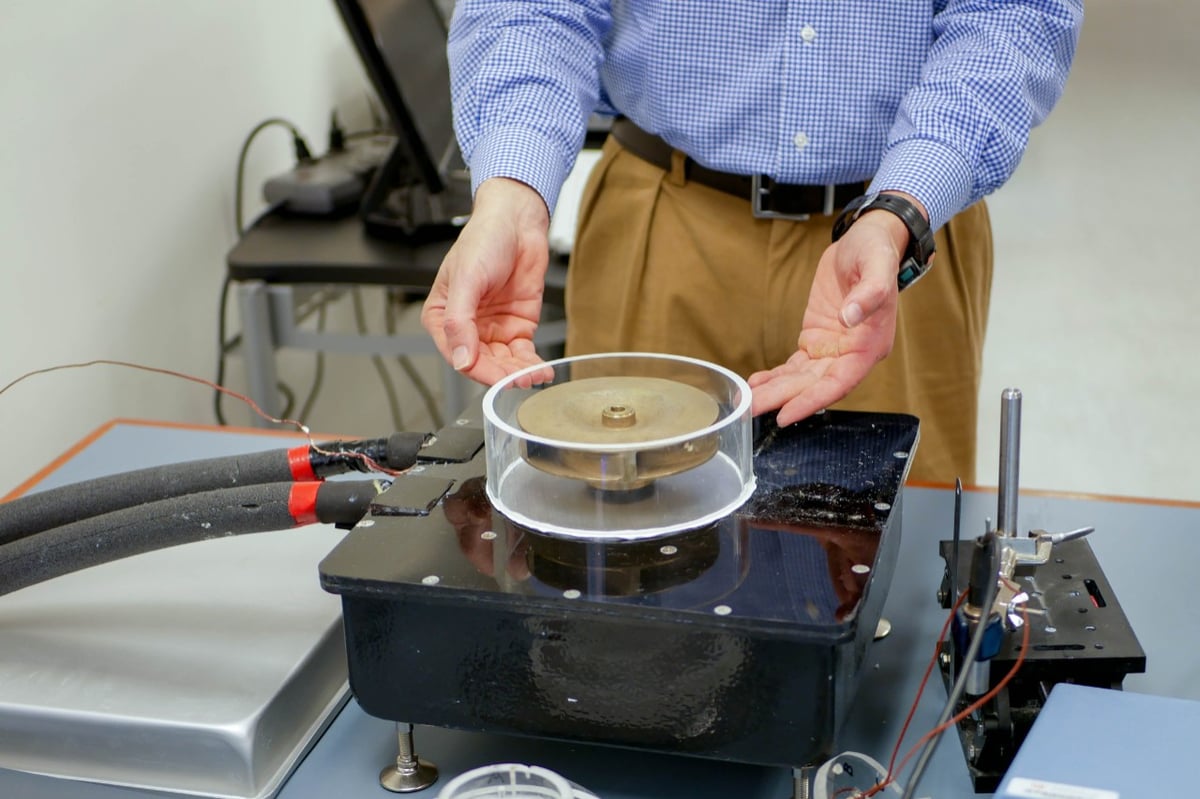By now, metal 3D printed parts are fairly common, even in industries such as aerospace that require extremely accurate, high-strength parts. To further enhance this integration, a novel method has been developed by a professor at the University of Cincinnati to ensure the integrity of these 3D printed parts.
As opposed to 3D printed metal parts, testing the integrity a machined metal part is straightforward: blocks of raw material can be tested for irregularities before machining by sending ultrasonic waves through them. If the block contains cracks or irregularities that could jeopardize the final part, the waves will bounce off them, signaling a weakness.
Additive metal manufacturing, however, builds parts layer-by-layer, rather than from a solid block. Using ultrasonic waves to test the final part by itself wouldn’t work, because the waves would simply bounce off the form of the part itself.
Just Freeze It in Ice
Francesco Simonetti, an aerospace engineering professor at the University of Cincinnati and expert in sound waves, has come up with a novel solution.
He decided to freeze the metal 3D printed metal parts in a block of ice so that the ultrasonic waves could travel through the ice just as it would with metal. This means the waves would only travel differently when encountering an irregularity in the part, just as they are intended to – it only works because ice is similar in density to metal.
Simonetti’s method, which he calls cryo-ultrasonics, is also quite practical since it’s relatively easy to encase the metal parts in ice compared to liquid metal, which would serve the same purpose.
The one catch is that the ice must be crystal-clear, free from any cracks or bubbles, in order to conduct the ultrasonic waves properly. To encase metal parts in crystal-clear ice when testing his concept, Simonetti utilized a homemade rig built using “parts from Amazon.”
Essentially, he ensured that the cylinder of ice froze from the bottom-up to prevent cracks from forming. The water was also mechanically agitated, continuously, to prevent bubbles from forming in the ice.

But Ice isn’t Quite Good Enough
Simonetti intends to experiment with suspended nanoparticles in the ice, just to raise its density even closer to that of the metal parts being tested. This would improve the accuracy of the ultrasonic wave scan.
The ice acts as a coupling medium, which means it should conduct the waves the same way metal would so that they only bounce off cracks in the part itself. Thus having a medium that is more similar in density to the metal would be more conducive to the scanning process.
Regardless of its novelty, this method to fault-testing will no doubt be useful to the industries that require high standards of integrity from 3D printed metal parts.
(Source: University of Cincinnati)
License: The text of "3D Printed Metal Parts to be Frozen for Fault Testing" by All3DP is licensed under a Creative Commons Attribution 4.0 International License.